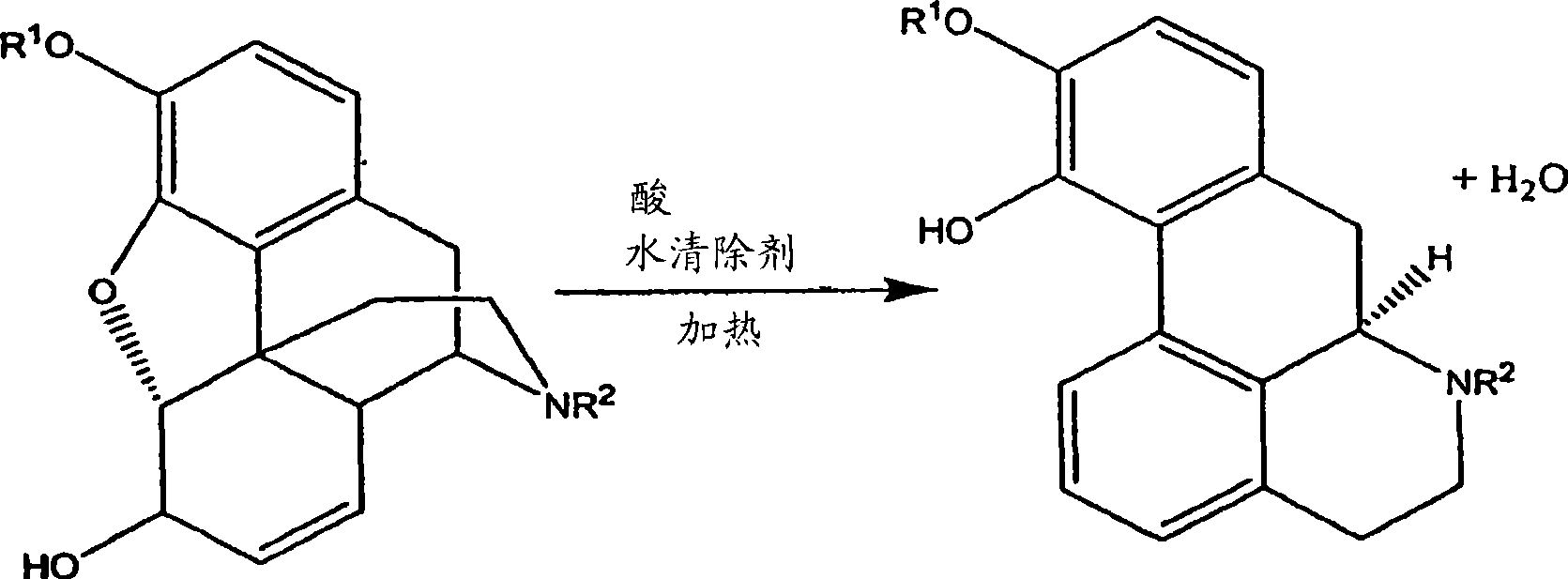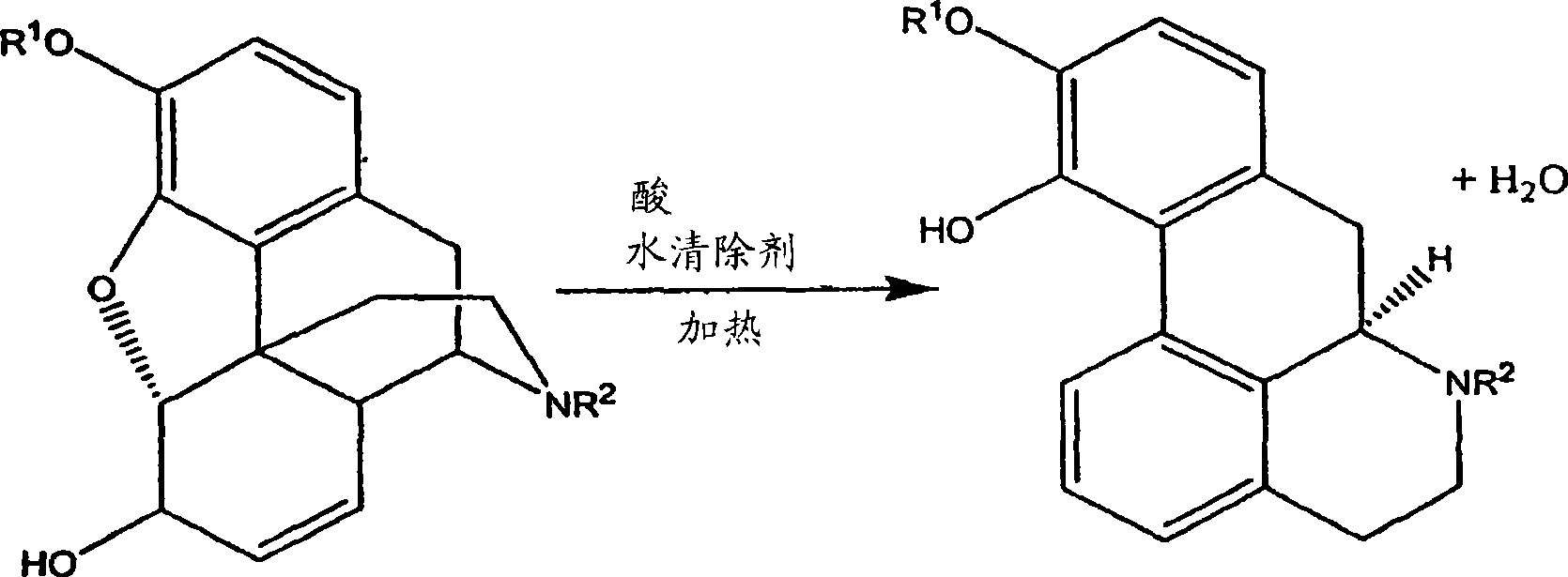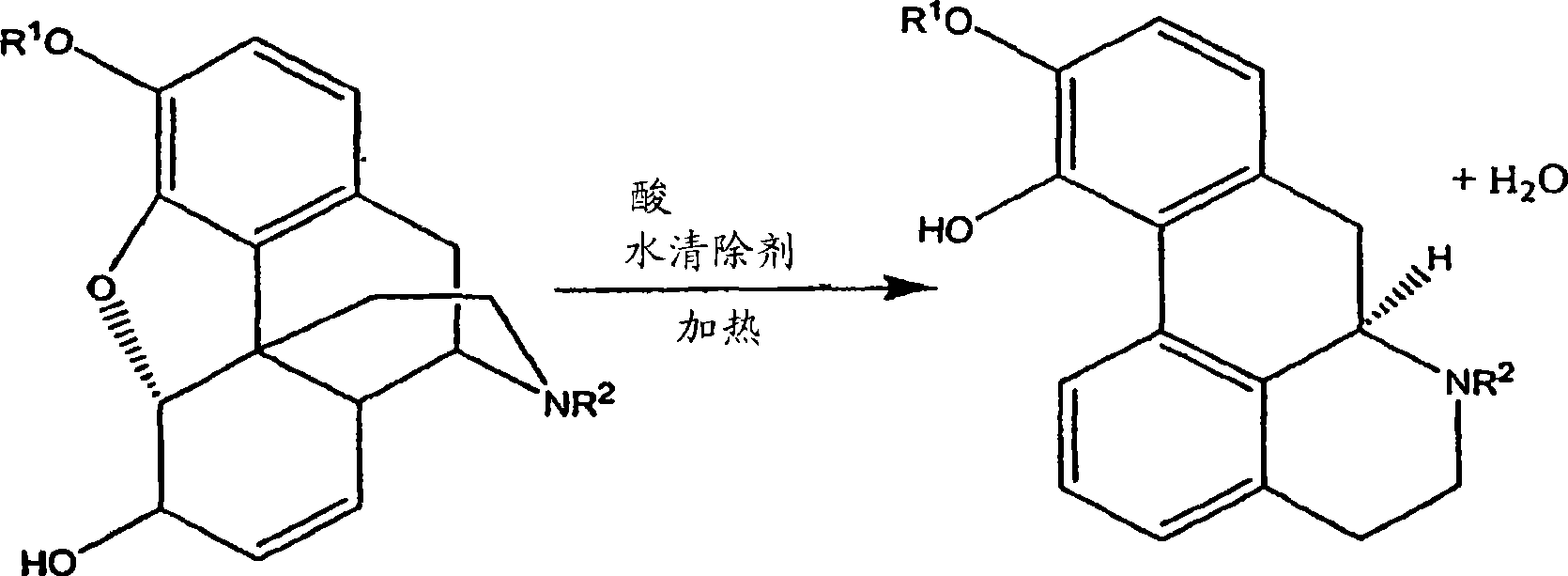Improved process for making apomorphine and apocodeine
A technology for apocodeine and apomorphine, which is applied in the field of preparing apomorphine and apocodeine, can solve the problems of cumbersome methods, poor product yield, high reaction temperature, etc., and achieves reduction of cumbersome operations and convenient The effect of reaction temperature
- Summary
- Abstract
- Description
- Claims
- Application Information
AI Technical Summary
Problems solved by technology
Method used
Image
Examples
Embodiment 1
[0025] Preparation of apomorphine
[0026] A mixture of morphine monohydrate (1.00 g), phosphoric acid (5.01 g) and phosphorus pentoxide (0.48 g) was gradually heated to 90°C to 100°C under an inert atmosphere. The resulting solution was stirred at this temperature for 2 hours to afford apomorphine (unisolated yield 63.22%). Pure apomorphine hydrochloride is isolated by hydrolysis of the reaction mixture, salting out, pH adjustment to liberate the free base, extraction of the free base and conversion to the hydrochloride salt. MS data: [M+H] = 268. The H1 and C13 NMR data demonstrated the structural arrangement of apomorphine and these spectra matched very well with reference spectra recorded in the Aldrich Library for NMR.
[0027] H-1NMR (DMSO-d 6 )δ 8.30ppm ( 2 J H,H d, 7.8Hz, 1Ar-H), 7.34ppm ( 2 J H,H t, 7.8Hz, 1Ar-H), 7.14ppm ( 2 J H,H d, 7.8Hz, 1Ar-H), 6.79ppm ( 2 J H,H d, 7.8Hz, 1Ar-H), 6.67ppm ( 2 J H,H d, 7.8Hz, 1Ar-H), δ 4.29-2.50 (multiplet, aliphatic-H,...
Embodiment 2
[0030] Preparation of apocodeine
[0031] Under an inert atmosphere, a mixture of codeine monohydrate (1.00 g), phosphoric acid (5.05 g) and phosphorus pentoxide (0.5 g) was gradually heated to 90°C to 100°C. The resulting solution was stirred at this temperature for 1 hour to afford apocodeine (73.45% unisolated yield). Pure apocodeine monoethanolate was isolated by hydrolysis of the reaction mixture, salting out, pH adjustment to release the free base, and recrystallization from ethanol. MS data: [M+H] = 282.
[0032] H-1 NMR (CDCl3) δ 8.25ppm ( 2 J H,H d, 7.8Hz, 1 Ar-H), 7.26ppm ( 2 J H,H t, 7.8Hz, 1 Ar-H), 7.05ppm ( 2 J H,Hd, 7.8Hz, 1 Ar-H), 6.75ppm (multiplet, 2 Ar-H), 6.5ppm (broad peak, phenolic hydroxyl proton), 3.68ppm (q, aliphatic 2H), 1.22(t, aliphatic 3H) δ3.75-2.35 (multiplet, aliphatic-H, 7H), 3.88 (singlet, O-CH 3 , 3H), δ 2.55ppm (single peak; N-CH 3 , 3H) and 2.19ppm (broad peak, 1H).
[0033] C-13 NMR (CDCl3) δ 146.0, 143.2, 134.5, 132.6, 131.6, 1...
PUM
 Login to View More
Login to View More Abstract
Description
Claims
Application Information
 Login to View More
Login to View More - R&D
- Intellectual Property
- Life Sciences
- Materials
- Tech Scout
- Unparalleled Data Quality
- Higher Quality Content
- 60% Fewer Hallucinations
Browse by: Latest US Patents, China's latest patents, Technical Efficacy Thesaurus, Application Domain, Technology Topic, Popular Technical Reports.
© 2025 PatSnap. All rights reserved.Legal|Privacy policy|Modern Slavery Act Transparency Statement|Sitemap|About US| Contact US: help@patsnap.com



